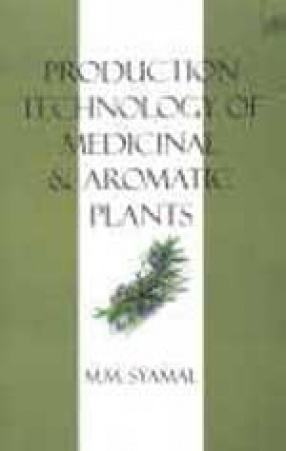Bryophytes, the ‘amphibians of the plant kingdom’, occupy almost all kinds of habitats in almost all parts of the globe. These are a group of plants with distinct identity; known to the mankind from time immemorial and consist of three lineages, viz., Liverworts, Hornworts and Mosses. Even though neglected for the lack of direct economic importance or un assuming nature; they play important role in ecosystem dynamics, nutrient cycling, soil binding, providing, microhabitats for other plant and animals, fills gaps in the habitats, promote plant succession, etc. They also serve as ideal study objects giving insights into the plant evolution, monitoring the ecosystem health and pollution levels. However, the studies on this group are comparatively lesser in India and most of them are confined to the Himalayas. Even tough the Southern India despite with its blessed climatic and geographical features of the Western Ghats is equally rich as the Himalayas, still remains bryologically under explored. This book is the result of extensive explorations on the bryophytes of Wayanad, the mountainous district in the Western Ghats of Kerala, notable for its unique geographical location with varied topography and associated habitat diversity supporting unique assemblage of biodiversity. Except for the coast and backwaters, almost all habitat types of South India, from low altitude to the high altitude grasslands and shola forests, occur in Wayanad, which forms the major part of the Nilgiri Biosphere Reserve. This book contains illustrative accounts of 171 species and two varieties of bryophytes belonging to 105 genera and 47 families; including two new species viz., Trichostomum Wayanadensis and Amphidium gangulii. Seven species and one variety are new distribution records to India, 31 species and one variety are new records to Peninsular India and 43 are new records to Kerala. Easy to follow keys and descriptions of family, genus and species are provided, supported with more than 160 figures and 200 photographs. Each species is treated in detail with the updated scientific name, important synonyms relevant to the Indian context and taxonomic description. Its macro and microhabitat details, Indian as well as global distribution and details of the voucher specimens are also given. Most of the bryophytes described in this book enjoys a wider distribution in South India, makes this book usable as an identification manual in almost all parts of the Western Ghats. This book fulfils the long felt need for a comprehensive taxonomic identification manual on the bryophytes of South India.
Bryophytes of Wayanad in Western Ghats
$125.10
$139.00
In stock
Free & Quick Delivery Worldwide
All orders amounting to US$ 50 or more qualify for Free Delivery Worldwide. For orders less than US$ 50, we offer Standard Delivery at $14 per book.
ABOUT THE AUTHOR K.P. Rajesh
Dr. K.P. Rajesh is active in research since 1994 and has published more than 20 research papers in national and international journals on various aspects of fern taxonomy, ecology, orchids, bryophytes, conservation biology, etc and co-authored one book entitled ‘Filmy Ferns of South India’. He is a member of many professional bodies such as SEEK, MNHS, CRIKSC, IAAT, etc and is active in nature education and conservation movements. He has contributed several popular science articles both in English and Malayalam. He is continuing the research in the Botany Department of Calicut University as a Research Fellow in the Ministry of Environment and Forests (MoEF), Govt. of India funded All India co-ordinated project on Taxonomy Capacity building (AICOPTAX) for Pteridophytes and Gymnosperms.
ABOUT THE AUTHOR Manju C. Nair
Dr. Manju C. Nair is active in bryophyte research since 1999 and has published more than 10 research papers in national and international journals. She has been awarded with the Senior Research Fellowship of CSIR, New Delhi to complete the doctoral thesis ‘Eco-systematic studies on bryophytes of Wayanad, Kerala’. She has extensively explored the southern Western Ghats and described two new species and recorded many species new to India, Peninsular India and Kerala. She is a member of the professional bodies such as International Association of Bryologists (IAB), Society for Environmental, Education in Kerala (SEEK), Malabar Natual History Society (MNHS), Centre for Research in Indigenous Knowledge, Science & Culture (CRIKSC), etc.
ABOUT THE AUTHOR P.V. Madhusoodanan
Prof. (Dr.) P.V. Madhusoodanan is the Head of the Botany Department, Calicut University and has been actively engaged in research and teaching since 1975. He has published over 100 research papers inj national and international journals on various aspects such as Fern taxonomy, morphology, ecology, cytology, palynology, weed biology, biofertilizers, Cyanobacteria. Plant tissue culture, Bryophytes, etc. The Calicut University has awarded PhD Degree to nine of his students, including co-authors of this book. He has co-authored two books entitled Fern Flora of South India-Taxonomic Revision of Polypodioid Ferns (1998) and Filmy ferns of South India (2003). Currently he is collaborating with the MoEF, Govt. of India funded All India co-ordinated project on Taxonomy Capacity building (AICOPTAX) for Pteridophytes and Gymnosperms and Kerala State Council for Science Technology and Environment (KSCSTE) funded project on Bryophytes of Kerala. He is a member of many academic and professional bodies.
reviews
0 in total
Review by Anonymous
Be the first to review “Bryophytes of Wayanad in Western Ghats” Cancel reply
You must be logged in to post a review.
Bibliographic information
Title
Bryophytes of Wayanad in Western Ghats
Author
Edition
1st ed.
Publisher
Length
iv+iv+284p., Figures; Plates; Tables; Bibliography; Appendix; Glossary; Index; 30cm.
Subjects
more by K.P. Rajesh see more
more by P.V. Madhusoodanan see more
similar bookssee more
Production Technology of Medicinal and Aromatic Plants
The present book 'Production ...
$18.90
$21.00
Concepts in Plant Breeding
$67.50
$75.00







There are no reviews yet.